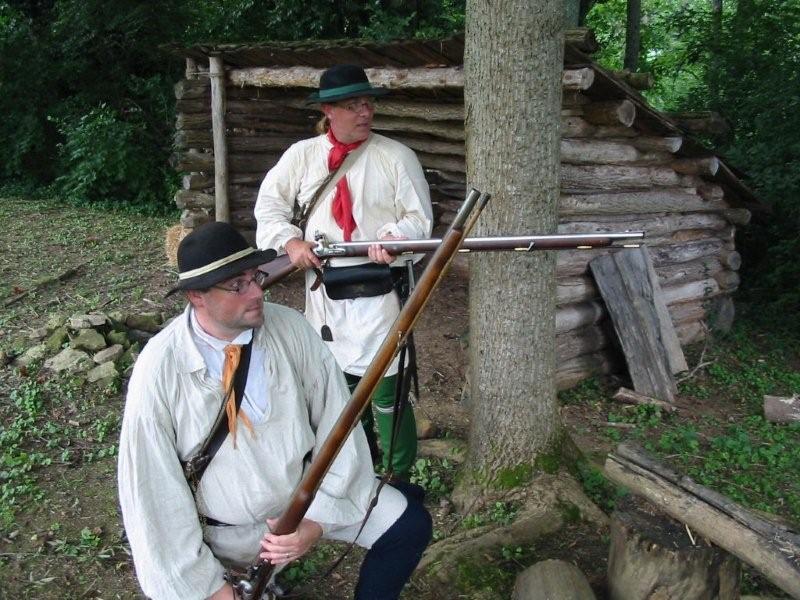
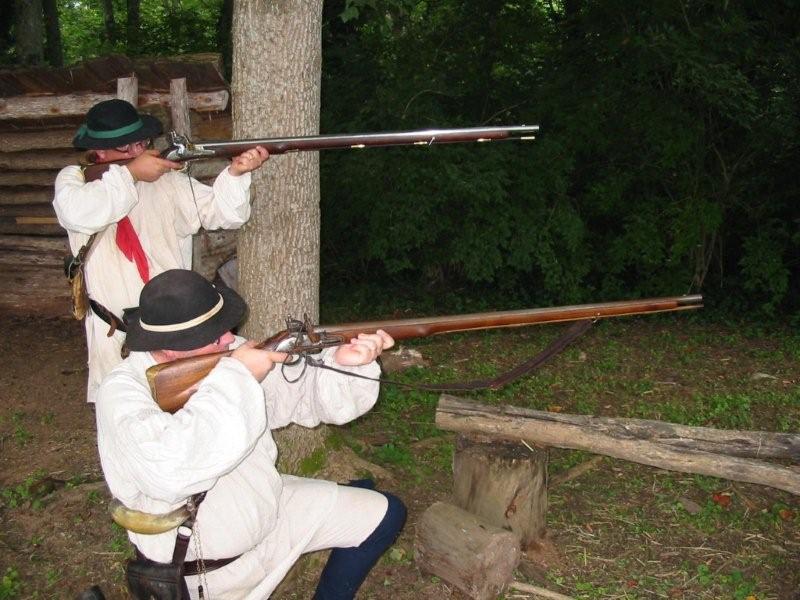
Captain William Preston’s Company of Rangers
“I received your letter of the 9th and I approve of your intentions to range the woods with the detachments from three companies and by no means continue in one place, but to proceed wherever you think the Indians may come to annoy our back settlements and I expect a number of the Cherokees will be with you this winter; if they do come, give orders that they may be kindly used. I have now sent up to COL Steuart 200 L for the use of the Rangers. And I think your country should do as some others have done to contribute to get your men some clothing. Your Rangers are to be paid 8 d. per day, you may make a stoppage of 2d. per day for their clothing.”
Lt Gov Dinwiddie to Cpt William
Preston, 15 September 1755


As an alternate impression, the members of Culpeper are invited to join Preston’s Company of Rangers, a 1756 “ranging company” from Augusta county Virginia. Probationary membership in Preston’s Rangers (and the Seven Years War Society) is included with Culpeper dues, and all new members have one year to meet minimum gear and clothing requirements.
Preston’s Rangers is a moderately progressive company. We expect our members to maintain a 24-hour period camp and be in appropriate attire of the period for the duration of the event. Tents should be of a small, military-wedge style and camp furniture should be kept to a minimum. As a ranging company, our impression is that of a small company on the move. We will occasionally offer the opportunity to do a “campaign” event with a pack in, or “flying” camp. Of course, families are always welcome. All personas should reflect the frontier culture of Augusta County at that time.
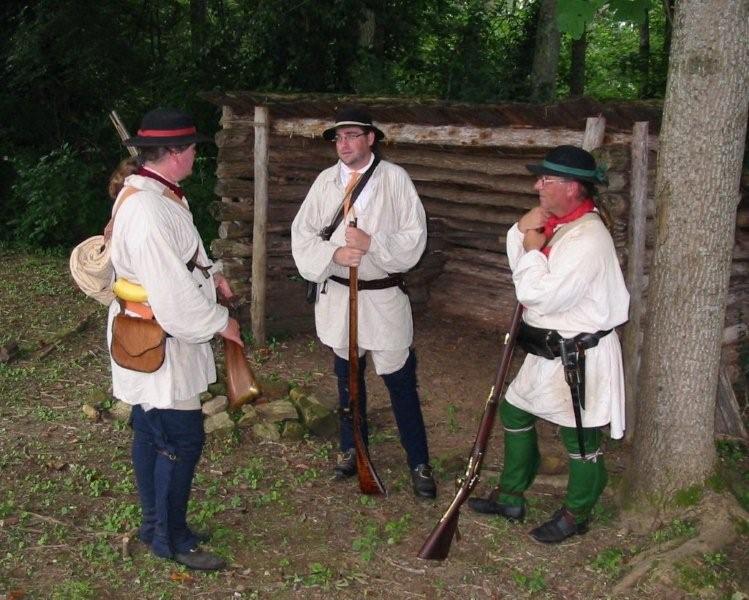
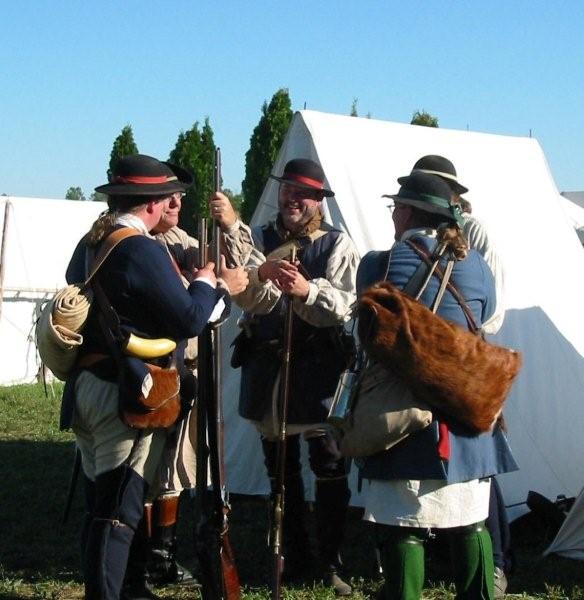
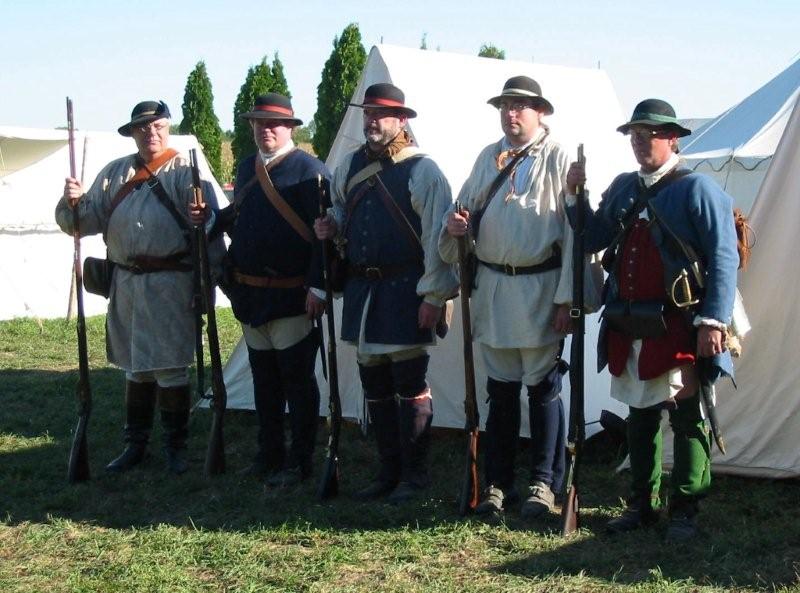
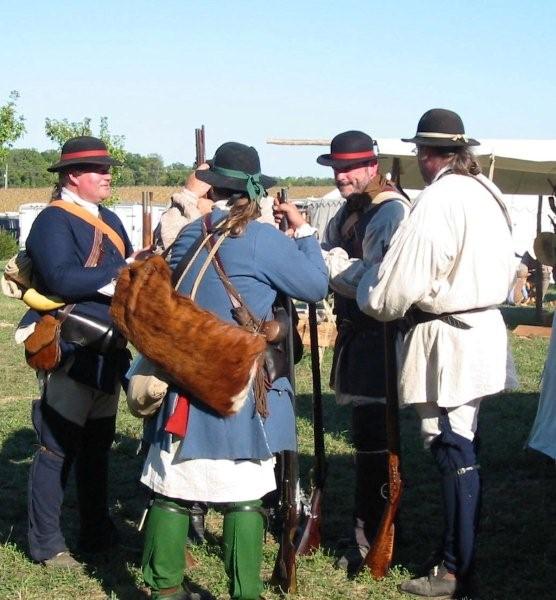
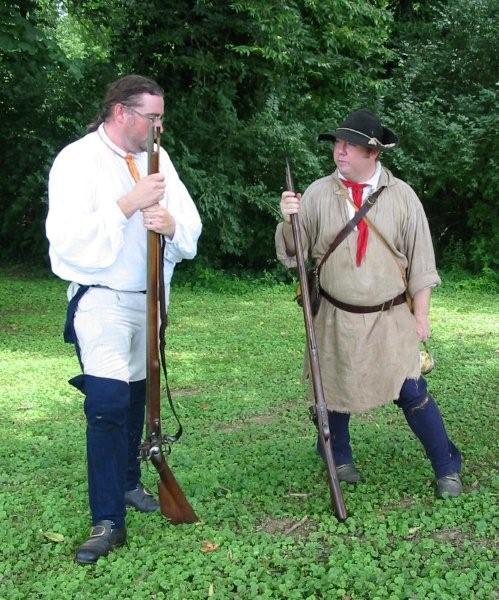
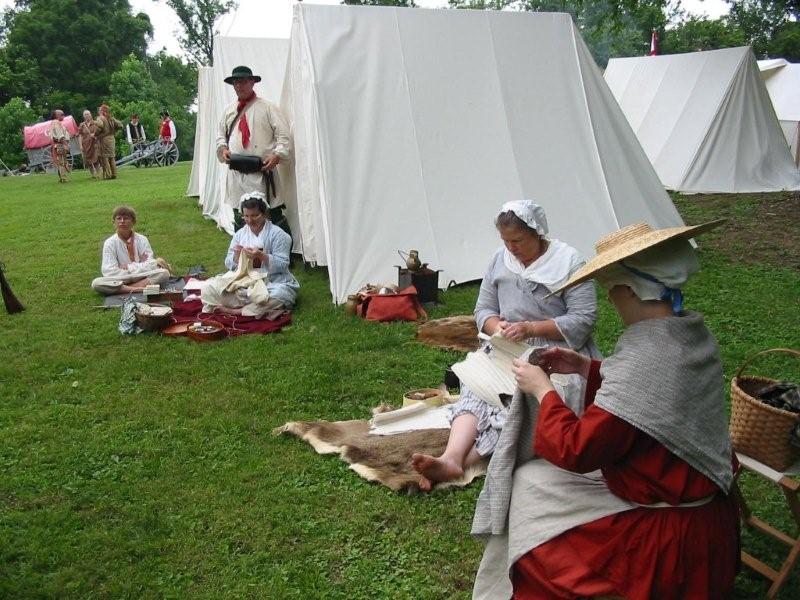
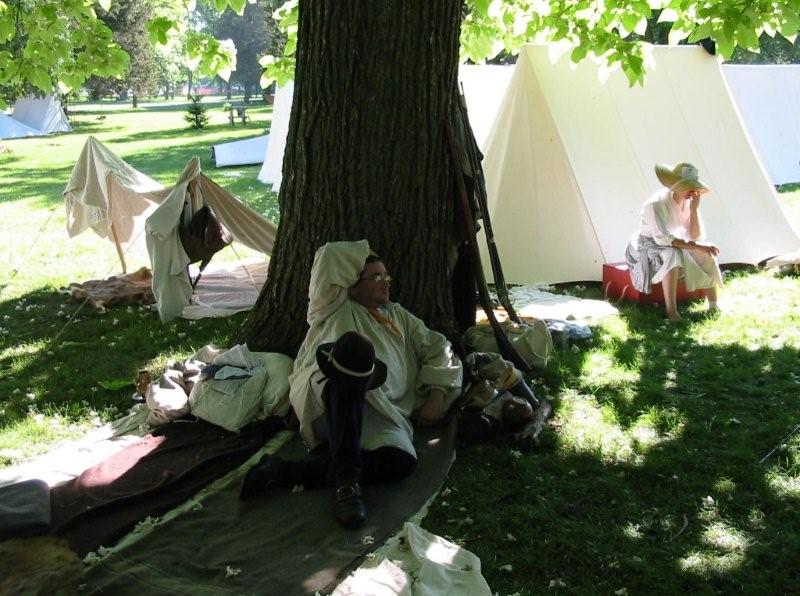


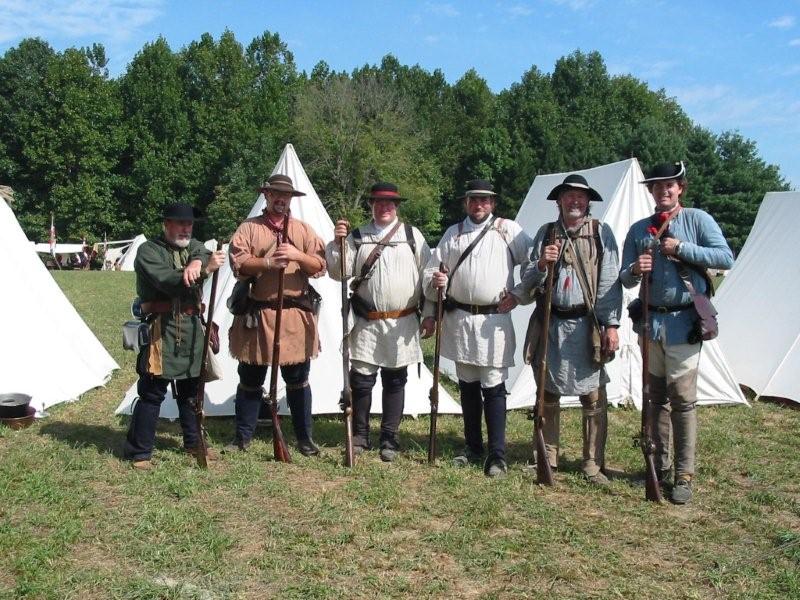
History
When General Braddock’s army was routed in July of 1755, the frontier of Virginia was left utterly defenseless. Governor Dinwiddie responded to this threat by forming several “ranging companies” that would “range” between forts and backcountry settlements, protecting them from hostile natives allied with the French. These companies built, strengthened and manned fortifications, spread alarm during times of Indian unrest, and reinforced areas that anticipated attack. This was largely a defensive war, with comparatively little action between long periods of mundane, hard physical labor.
The only offensive move the Rangers participated in (in fact, Virginia’s only offensive of the war) was the Sandy Creek Expedition of February/March 1756. The expedition was mounted to destroy the towns of hostile Shawnee along the Ohio River. 220 rangers and volunteers, along with 130 Cherokee warriors started the long wilderness march to the Ohio villages. Troubles appeared from the start; cutting a path through the wilderness and trekking through the narrow mountain passages, with repeated river and creek crossings was painstakingly slow. After several weeks, supplies ran short and disagreements with their Cherokee allies led to the warriors withdrawing from the campaign. As hunger set in, the men refused to go further. On March 13th, they turned back for their homes.
Though the Sandy Creek Expedition wasn’t exactly a successful campaign, it may have provided valuable experience to many of the men involved. William Preston, Andrew Lewis, and others, would become central figures in the militia, defending Virginia throughout the French & Indian War, later native uprisings, and on into the Revolution. The rangers would continue to serve through the end of the decade, guarding the backdoor to Virginia.
To read more about William Preston and his rangers, click on the following links:
http://libjournal.uncg.edu/ojs/index.php/jbc/article/viewFile/33/22
http://www.as.wvu.edu/WVHistory/documents/003.pdf
Capt. William Preston’s Coy. of Virginia Rangers
Preferred Clothing & Accoutrements
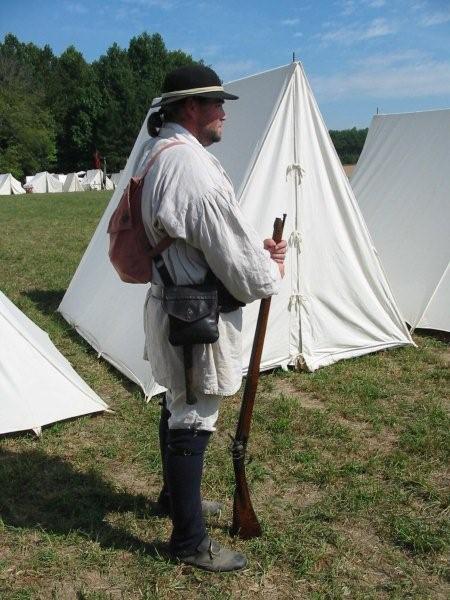
Coating
Civilian clothing consisting of mid-1750’s coats, jackets & waistcoats. Linen, pull-over smocks. Sources: Secrests, Weeping Heart, Cobb Creek, JP Ryan Patterns.
Breeches (same as Culpeper Minute Battalion (CMB))
Linen, hemp, Virginia cloth, or wool. English small drop-front or French Fly. Natural and blue were quite common. Sources: Weeping Heart, Cobb Creek, Ohio Valley Peddler. (Same as CMB)
Breech clouts also ok.
Leggings (same as CMB)
Blue wool, native-style, with approx 2” side flaps. Sewn w/blue thread. (Same as CMB)
Hats (same as CMB)
Black round hat with approx 2 ½- 3 inch brim. (Same as CMB without buck’s tail)
Shirts (same as CMB)
White (or natural) oznaburg (linen) or check (verify check material before buying).
Socks (same as CMB)
Natural, gray, or blue.
Footwear (same as CMB)
Military style shoes w/ties or simple brass buckle. Townsend, Fugawee, Robert Land
Home-style, natural color, ruff out shoes. Robert Land ***This is a cool shoe***
Moccasins – Center-seam, Eastern woodland. Sources: Greg Hudson
Firearms
English style Fowler. See Jim Chambers kits. If going this route, I would build off an early example.
LLP Bess. For American militia use, this should most likely be the 1742 or previous models. Dating on lock could be modified and other models will be acceptable.
Early Dutch Musket. Documentation exists that Dutch muskets made there way to Virginia militia companies during the F&I war.
Accoutrements (same as CMB in most cases)
Cartridge belly box - 9 or 12 round English style and/or period shot pouch and horn (often used in conjunction with the smaller cartridge boxes). See descriptions in CMB
Powder Horns – Virginia horns tend to be somewhat plain but several documented carved horns do exist. See Kyle for examples. Also see Dressler’s book on powder horns.
Shot Pouches – Very few documented pouches have survived. One common feature: they were small, perhaps around 7 inches or so square, or slightly rectangular. Many were made with the hair-on. Some examples can be seen in Madison Grant’s Hunting Pouch book and also in Jim Mullins “Of Sorts for Provincials”. This is one item it is best to check with an experienced member before buying.
Packs – Oznaburg market wallets. Sources: Secrests
Blanket Roll – Tump line.
Canteen – wooden drum-style with wood bands (best choice. Available from Panther Primitive but will require some modifications such as replacing the straps with a proper hemp webbing), wood canteen with metal bands (less common. Available from Jas. Townsend, also requiring slight modifications). Wood canteens can be painted, stained, or left natural). Tin canteen (least common for militia), kidney shape.
All images are copyright 2011 by the Culpeper Minute Battalion, or Gary Liming